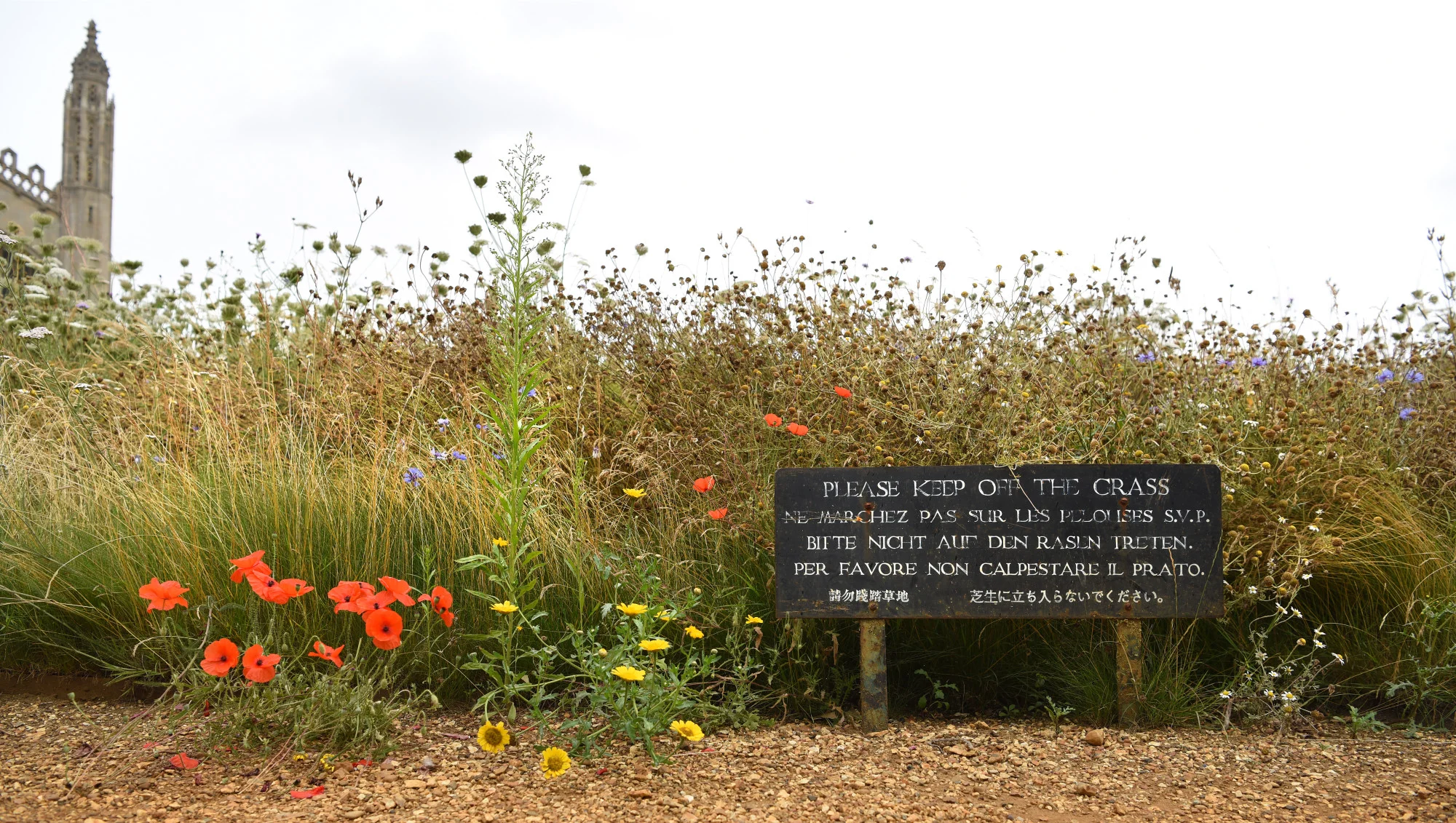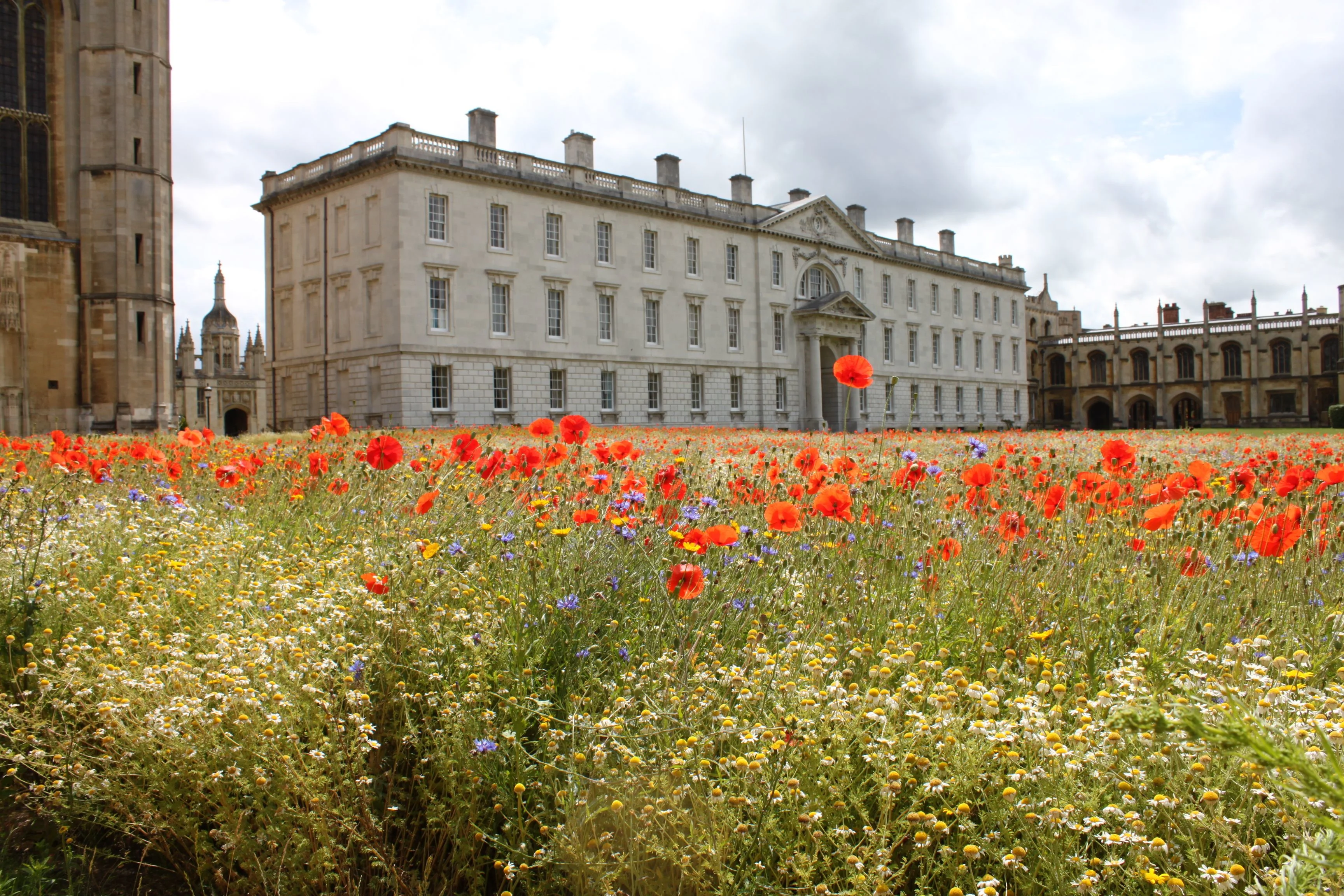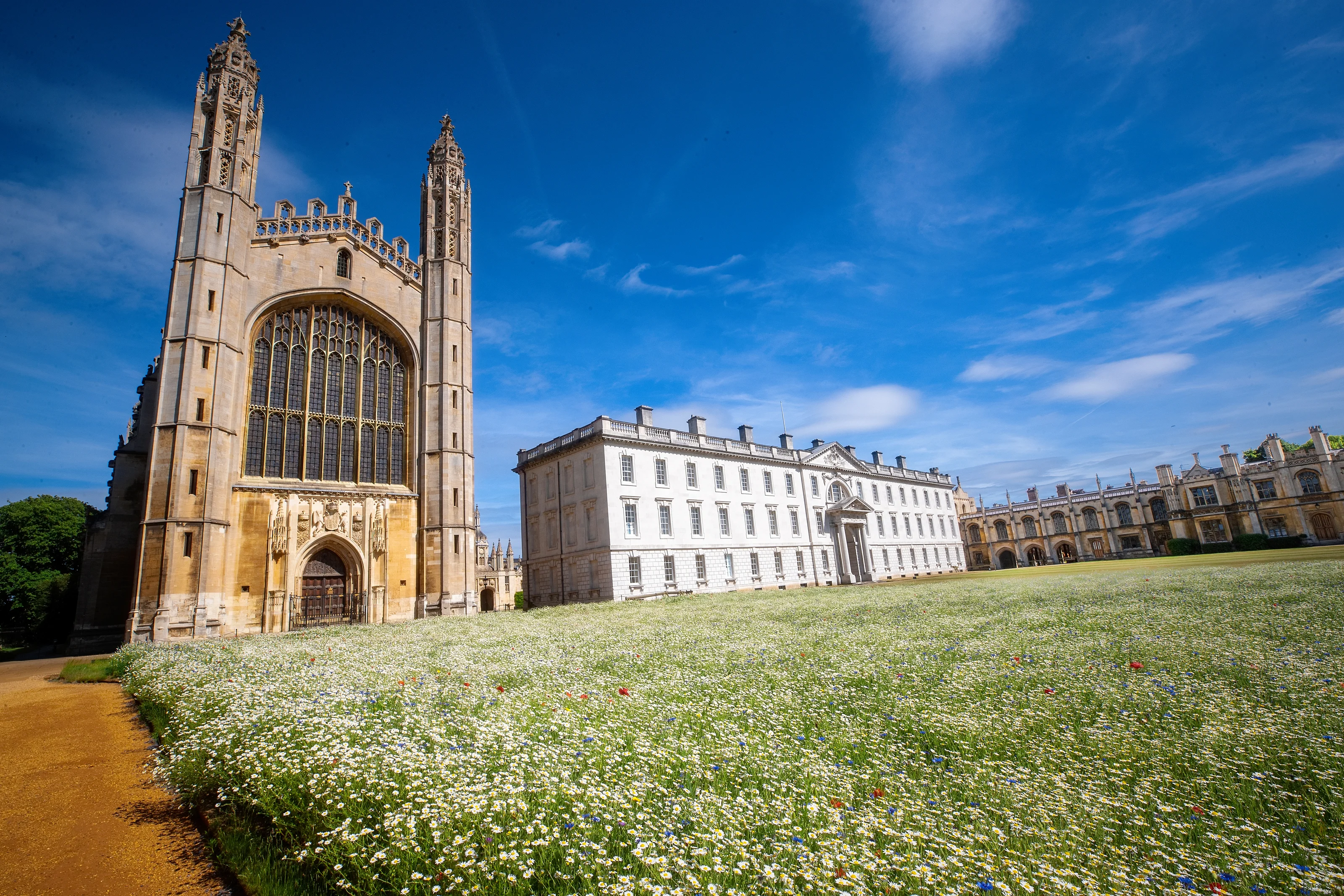
Here's why you should consider swapping your lawn for a wildflower meadow
Landscaping? Here’s a thought - why not ditch your lawn in favour of a wildflower meadow?
Research from the University of Cambridge suggests there are big benefits to swapping your lawn for a wildflower meadow. An experiment at King's College found these flower-heavy patches to be more environmentally friendly, less time-consuming, and more economical than a traditional grass yard.

The wildflower meadow on King's College Lawn (above) has proven to have big ecological benefits (all photos courtesy of University of Cambridge/supplied).
Part of the iconic Back Lawn at the college was transformed into a wildflower meadow - a move that yielded impressive results: the meadow now supports over 3.6 times more plants, spiders, and bugs than nearby lawns. The biomass of invertebrates in the meadow is 25 times higher, and local bats have taken notice.
“We found that bats are foraging three times more often over the meadow than over the lawn," Dr. Cicely Marshall, a researcher at King’s College and the study's lead, said in a statement.
"For species that might look for insects over several miles in a single evening, it’s incredible that our small meadow impacted their behaviour,” says Marshall.

Undergrad students survey the meadow.
While initially seeded with 33 plant species, the meadow now hosts at least 51 more, and reflects 25 per cent more sunlight than the lawn. This helps counteract 'urban heating.' Cities tend to be warmer than rural areas due to large concentrations of buildings, pavements, and other heat-absorbing surfaces - but by absorbing sunlight, the wildflower patch had a cooling effect.
It’s something to keep in mind - because this is a concept that may catch on. The State of Minnesota even launched a pilot program encouraging residents to replace their lawns with pollinator-friendly plants.

Researchers noted the wildflower meadow has a cooling effect due to its ability to absorb sunlight.
Residents were offered grants to help cover the costs of converting their lawns. The initiative was announced in 2020 and, within a year, people had planted around eight football fields worth of pollinator gardens, meadows, and flowering trees.
One more point in favour of wildflower 'lawns': They require no mowing, fertilizing, watering, or pesticide spraying.











